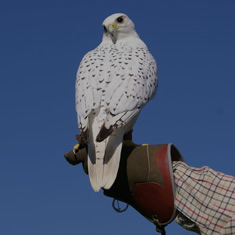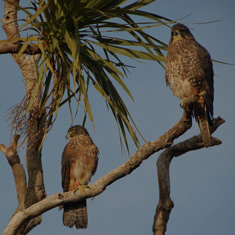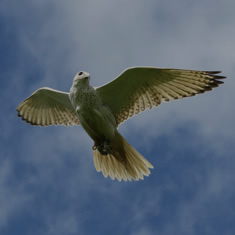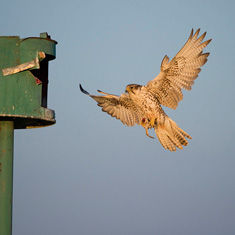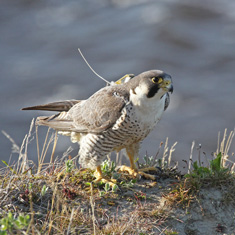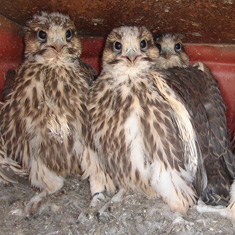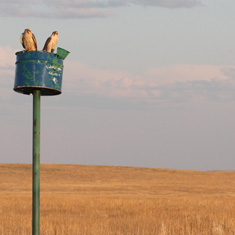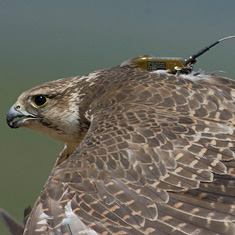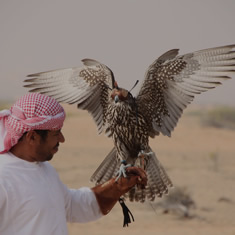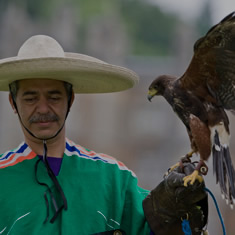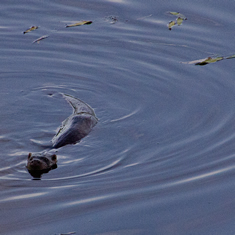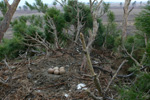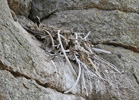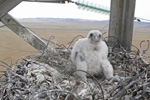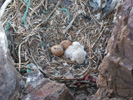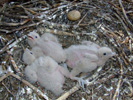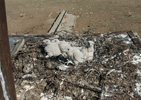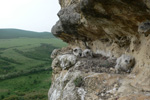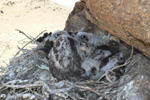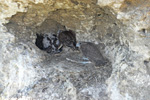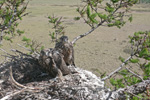- Breeding and Biology
Breeding biology
Saker Falcons nest on cliffs, trees, on human artefacts such as electricity pylons and buildings and also rarely on the ground. They typically occupy stick nests built by other birds such as Ravens, buzzards and eagles, but can also lay their eggs on bare ledges. Sakers are territorial, defending exclusive nesting areas, which are often reoccupied in consecutive years.
The breeding season begins with egg laying in March or April and the typical clutch size is usually 4 or 5 eggs (range 2-6). Eggs are laid at two-day intervals and one brood per year is produced. Replacement clutches can be laid in the event of egg loss. Incubation normally begins when the penultimate egg is laid and first eggs hatch around 32-35 days later. Both the male and female share incubation, but the female takes the bulk of this duty.
The female broods and guards the nestlings for up to two weeks after hatching while the male alone hunts and provides food, later both parents hunt and feed the chicks. Chicks fledge at between 35 to 45 days and become fully independent after a further 28 to 45 days when they disperse from their natal area.
Sakers can breed at two years old, but many birds may not be able to establish themselves in a breeding territory until they are several years older.
Conservation and Research
- Raptor Conservation
- The Peregrine Falcon
- Mauritius Kestrel
- Red Kite Conservation
- New Zealand Falcon Conservation Project
- Migration and Movements of Saker Falcons
- Falcon Genome Project
- Electrocution of Birds of Prey
The Saker Falcon
- The Saker Falcon
- Description
- Taxonomy
- Breeding Distribution
- Breeding Population Estimates
- Wintering Distribution
- Habitat
- Hunting and Diet
- Breeding and Biology
- Migration
- Conservation Status
- Conservation Threats
- Sustainable Harvest
- Conservation overview (HH Sheikh Zayed)
- Captive breeding & research
- Bibliography
- Satellite Tracking
- Reintroduction in Bulgaria
- Reintroduction in Bulgaria
- Mongolian Artificial Nest Project Information
- Mongolian Artificial Nest Project Articles

